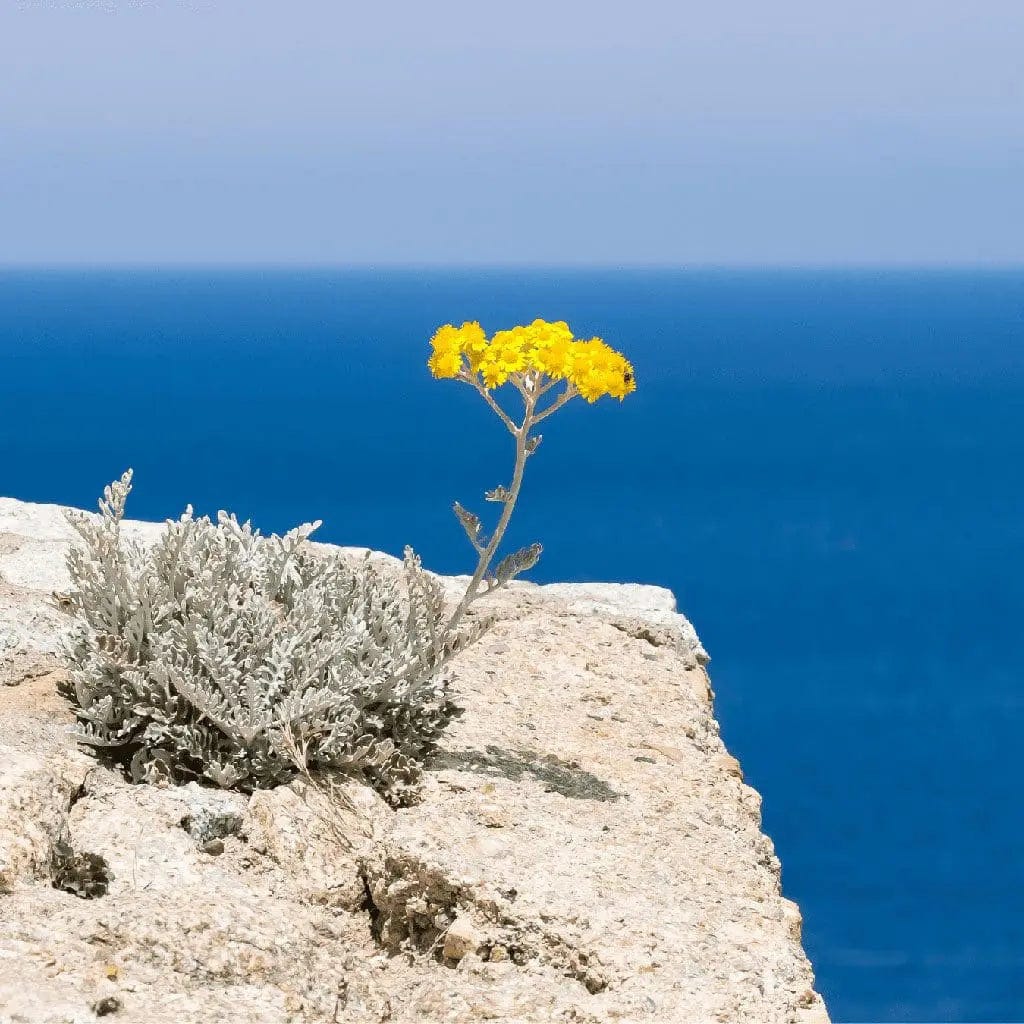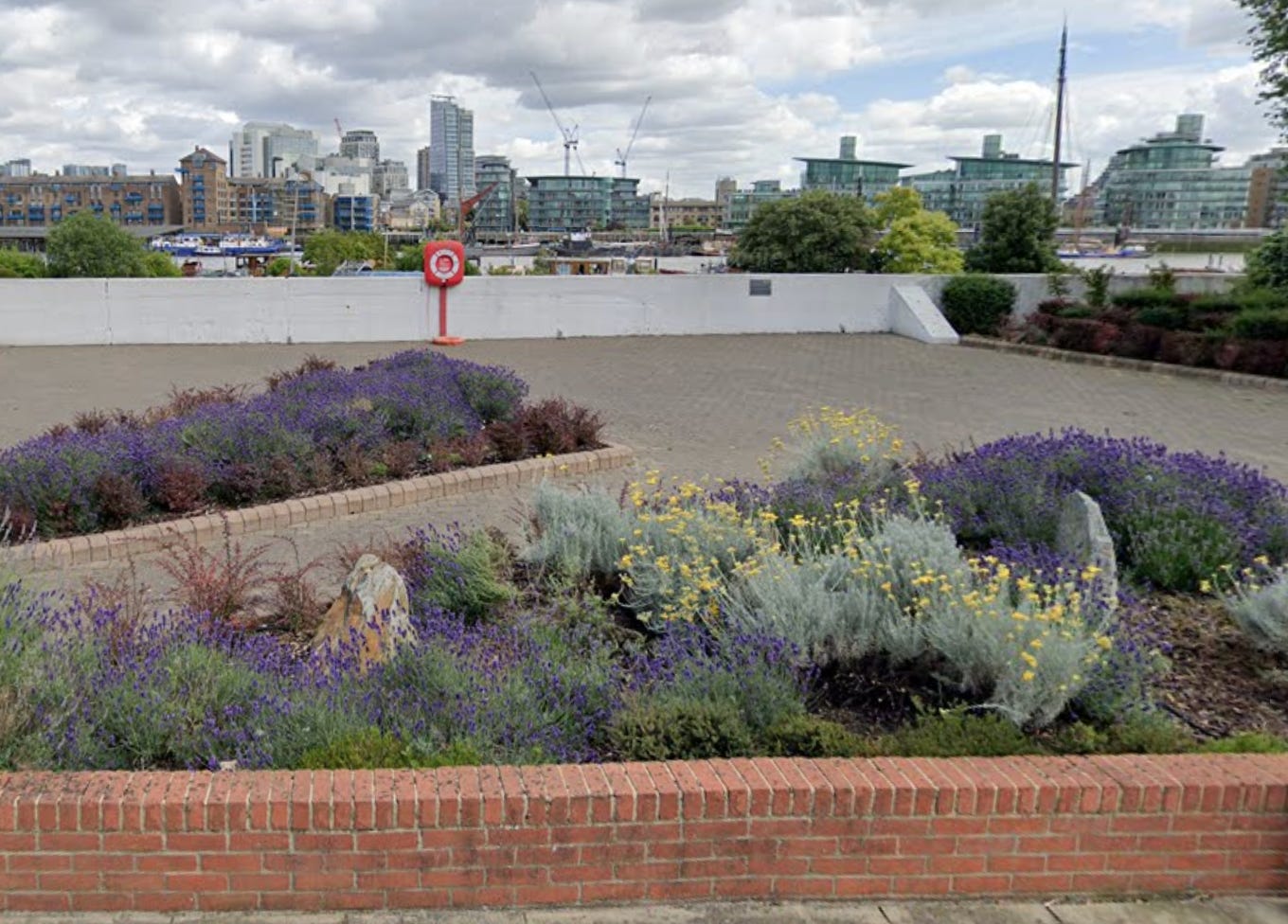On the walk down from our house on Andros towards the beach, there’s a small patch of road where a rich scent of herbs pervades the air. For years I’ve tried to identify its source, but there are so many plants around that I had not managed to find it.
Because I associate the smell with sea and sun, and because these are not things I associate with the UK (somewhat unfairly, since the UK is an island, and we’ve had sunny, warm summers in recent years), I was surprised to smell that exact same scent on the Queen’s Walk in London. Luckily, there are fewer herb plants in London’s south bank, so finding the source was considerably easier: behold Helichrysum Italicum:
Or, as it looks in London:
Flowers tend to have great names, and Helichrysum does not let its flora brethren down: the name comes from the Greek words for sun (helios) and golden (chrysos). It is also known as Immortelle in French, Amarandos (perennial / unwilting), Athanatos (immortal), or Elichrysos in Greek, and (less epically, more misnomerly, but still exotically) curry plant in English.
According to Claude, its distinctive scent comes from a number of compounds:
These compounds are found in a range of other herbs and flowers, including rose and lavender (Neryl acetate), pine trees, rosemary, and sage (and less wholesomely, cannabis) (α-pinene and β-pinene), citrus but also dill and fennel (limonene), eucalyptus and basil (eucalyptol), tumeric, oregano, and ginger (γ-curcumene), and orange blossom (nerol).
Still according to Claude, Helichrysum is used in several fragrances as a main ingredient, though sadly I’ve never tried any of them (something to rectify):
(Though it’s not used as a main ingredient, I think Givenchy’s Vetyver smells a little like it).
Long story short, this is a beautifully named beautiful plant with a particularly complex aroma. Recommended.





